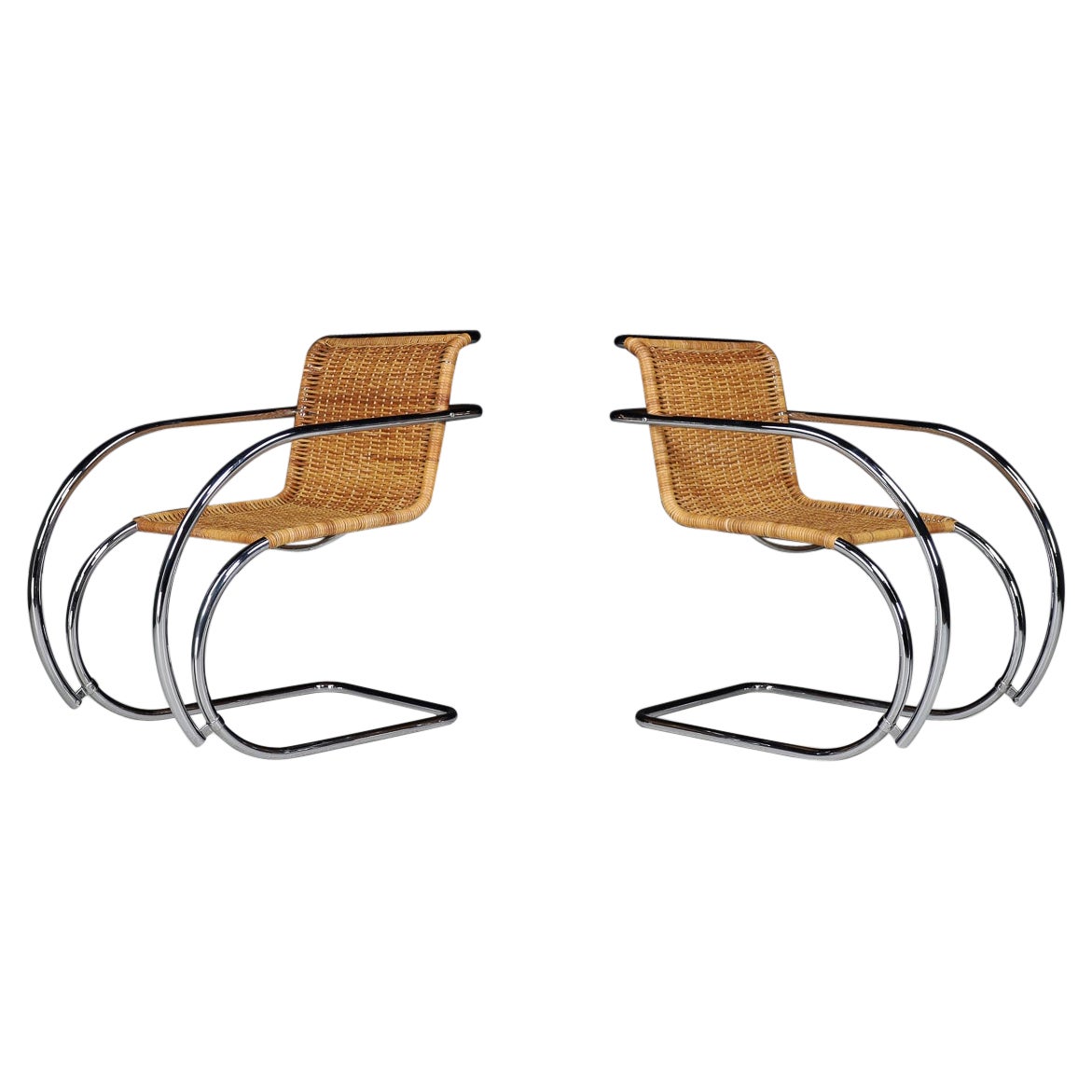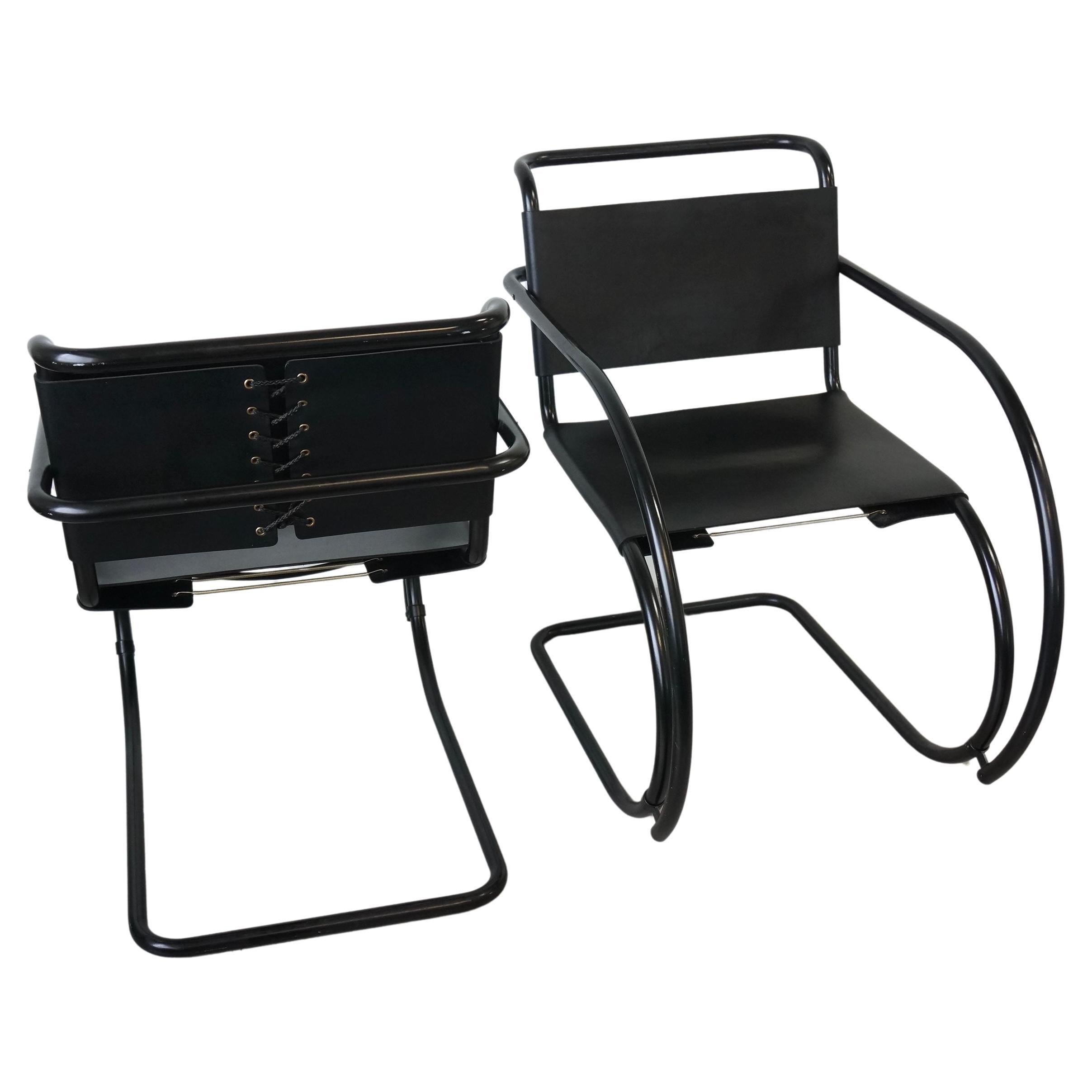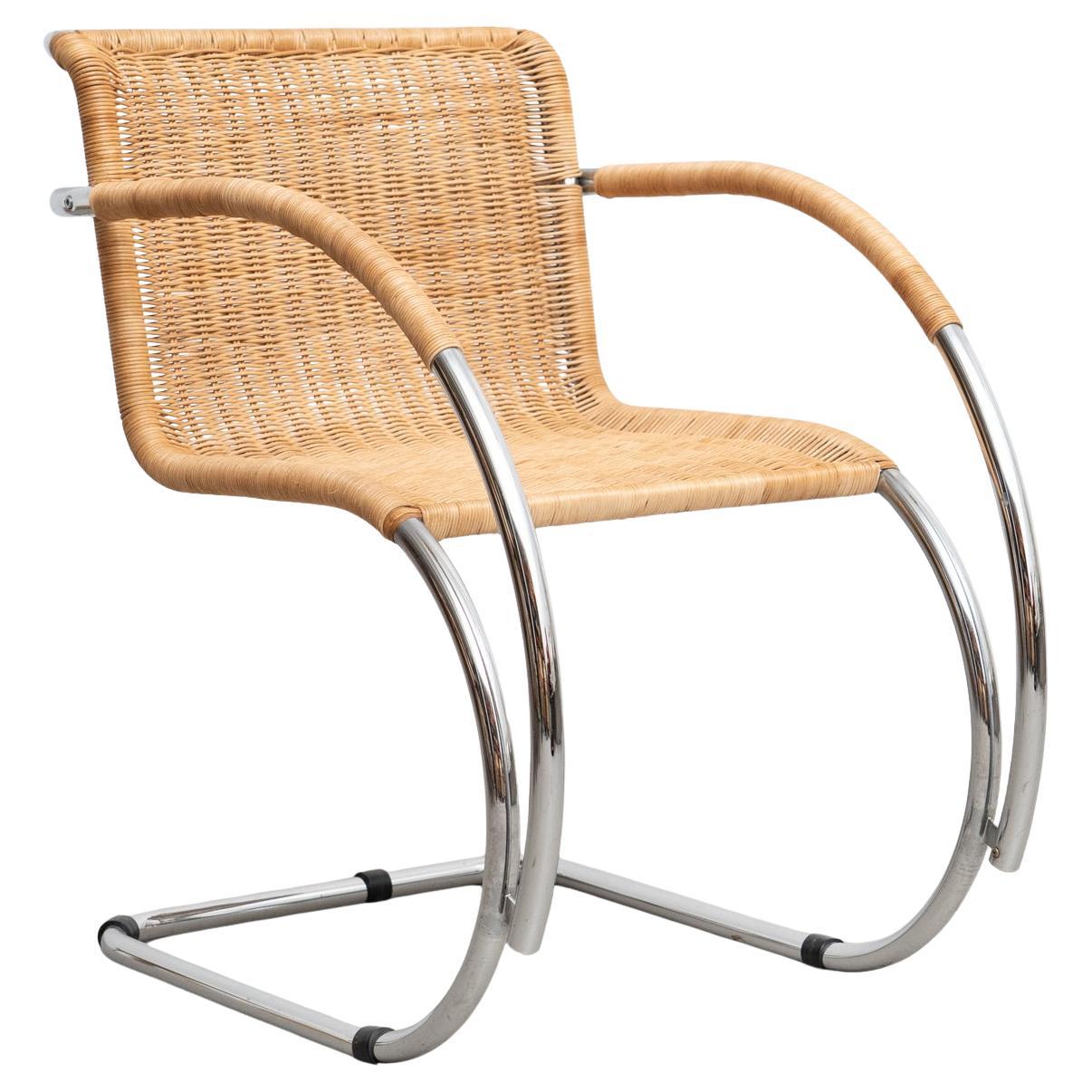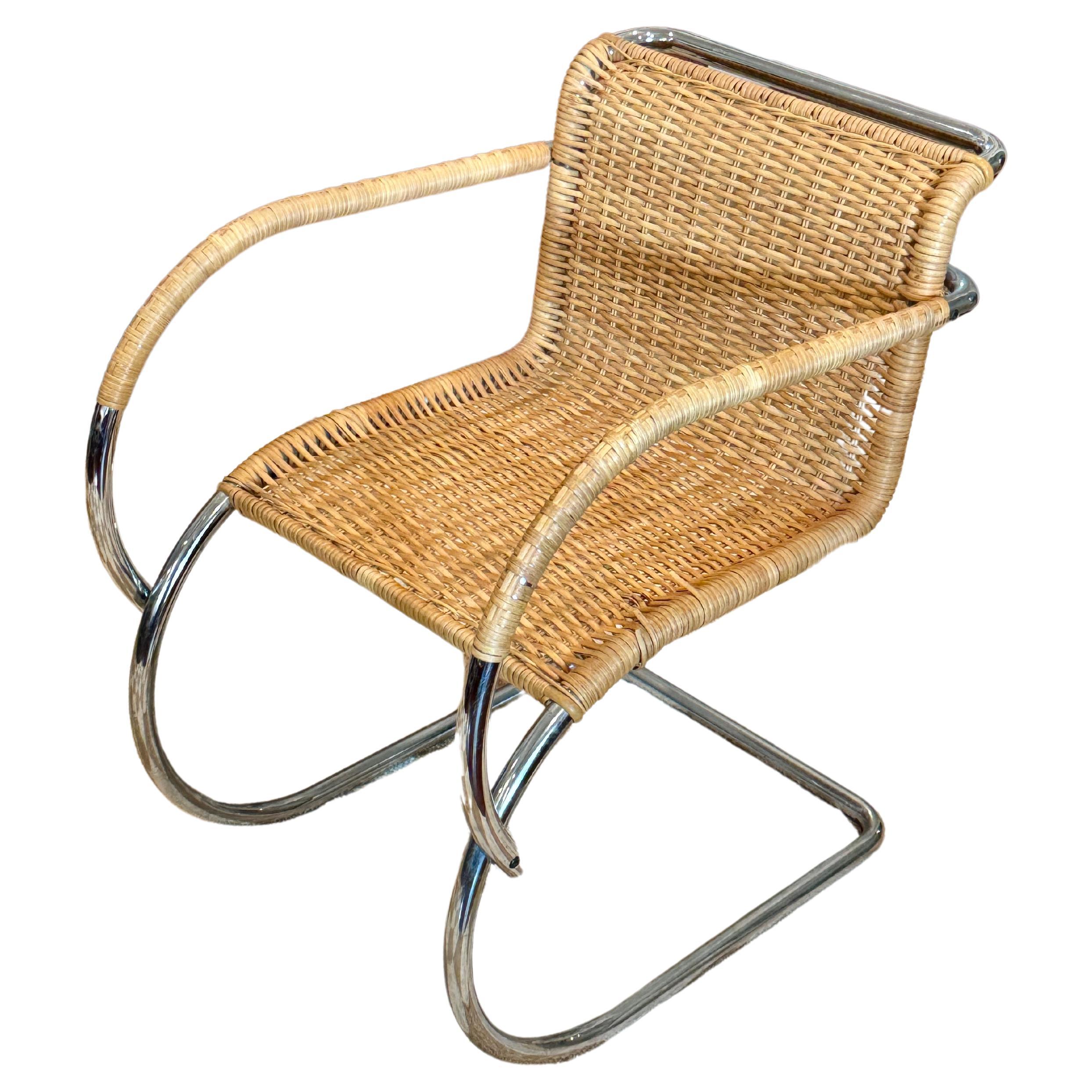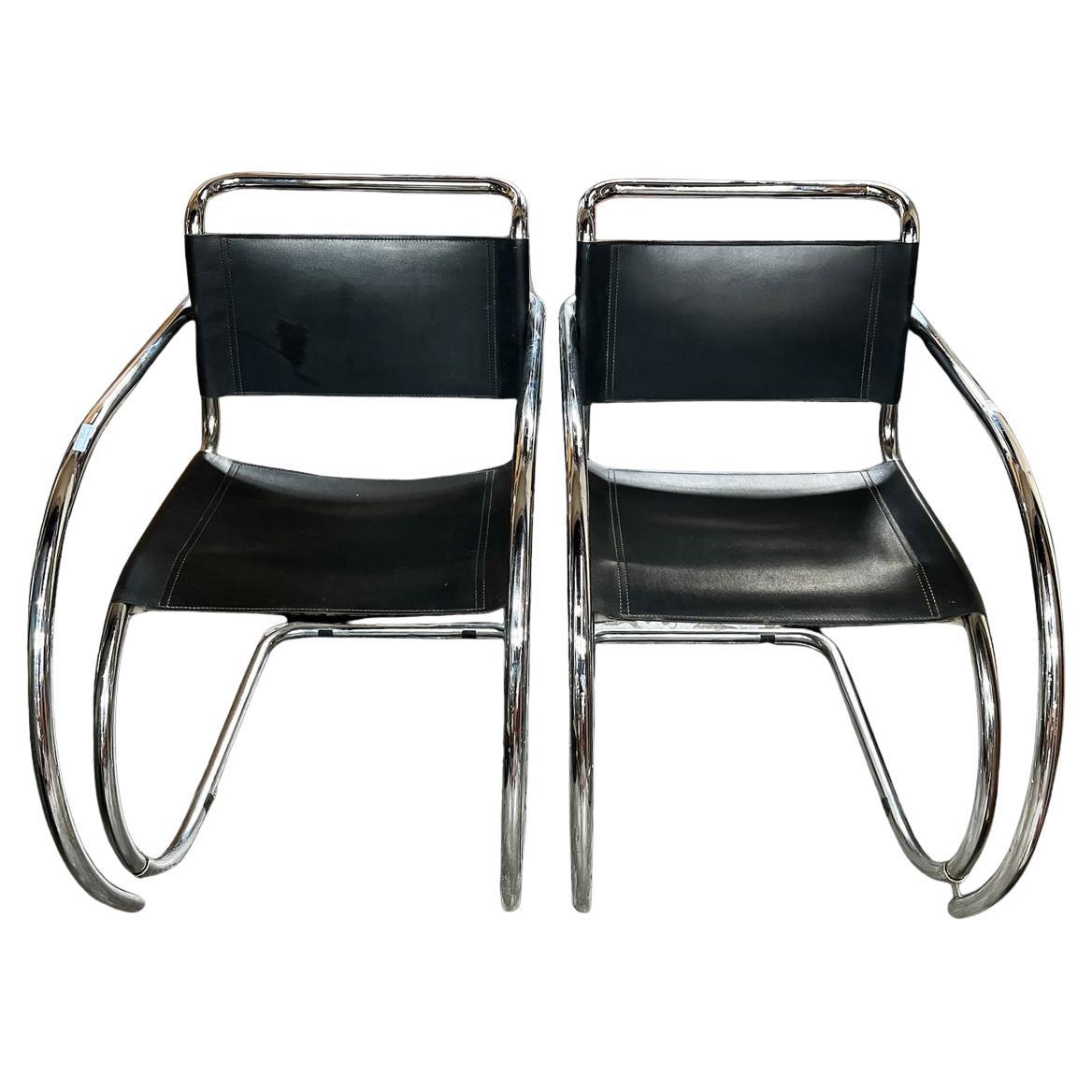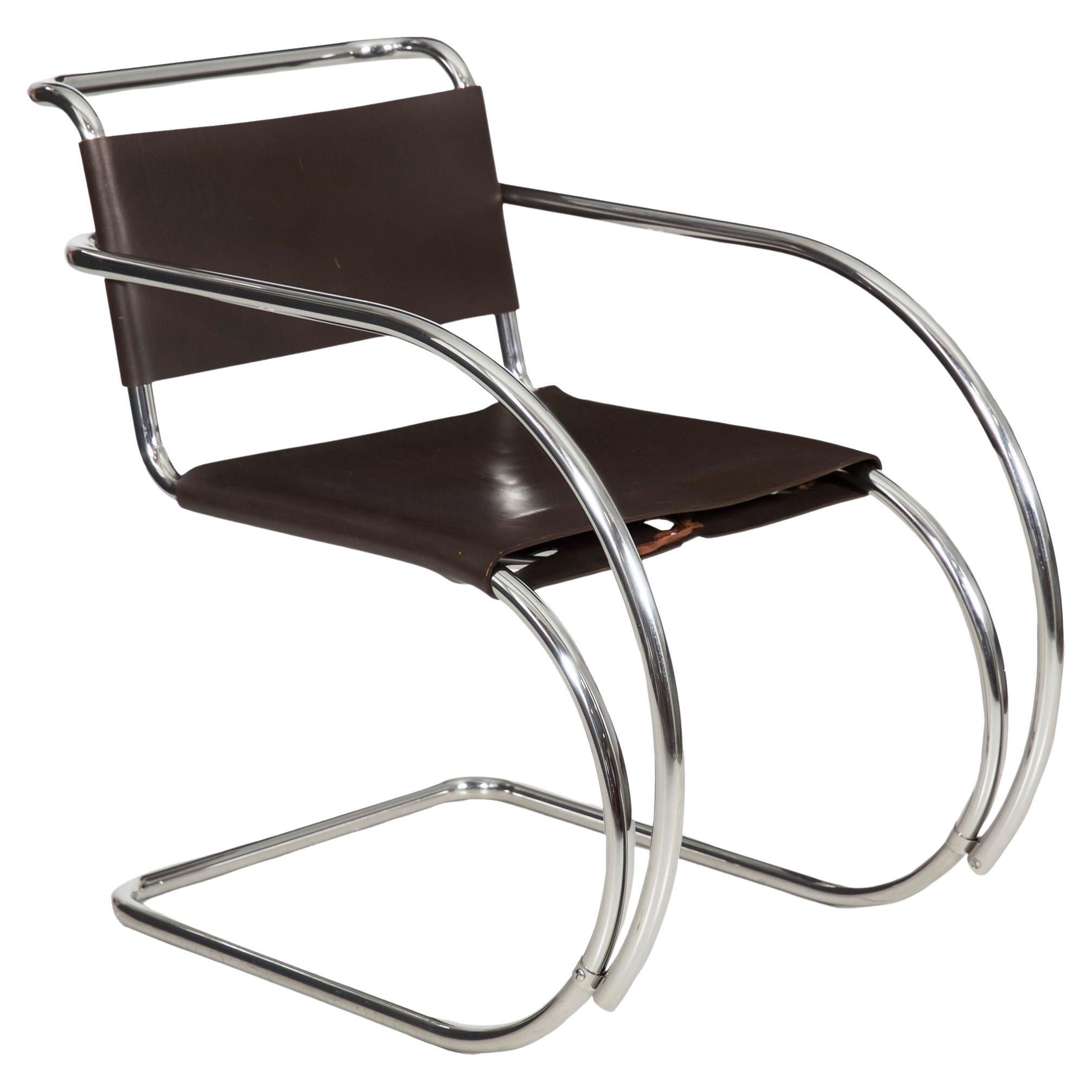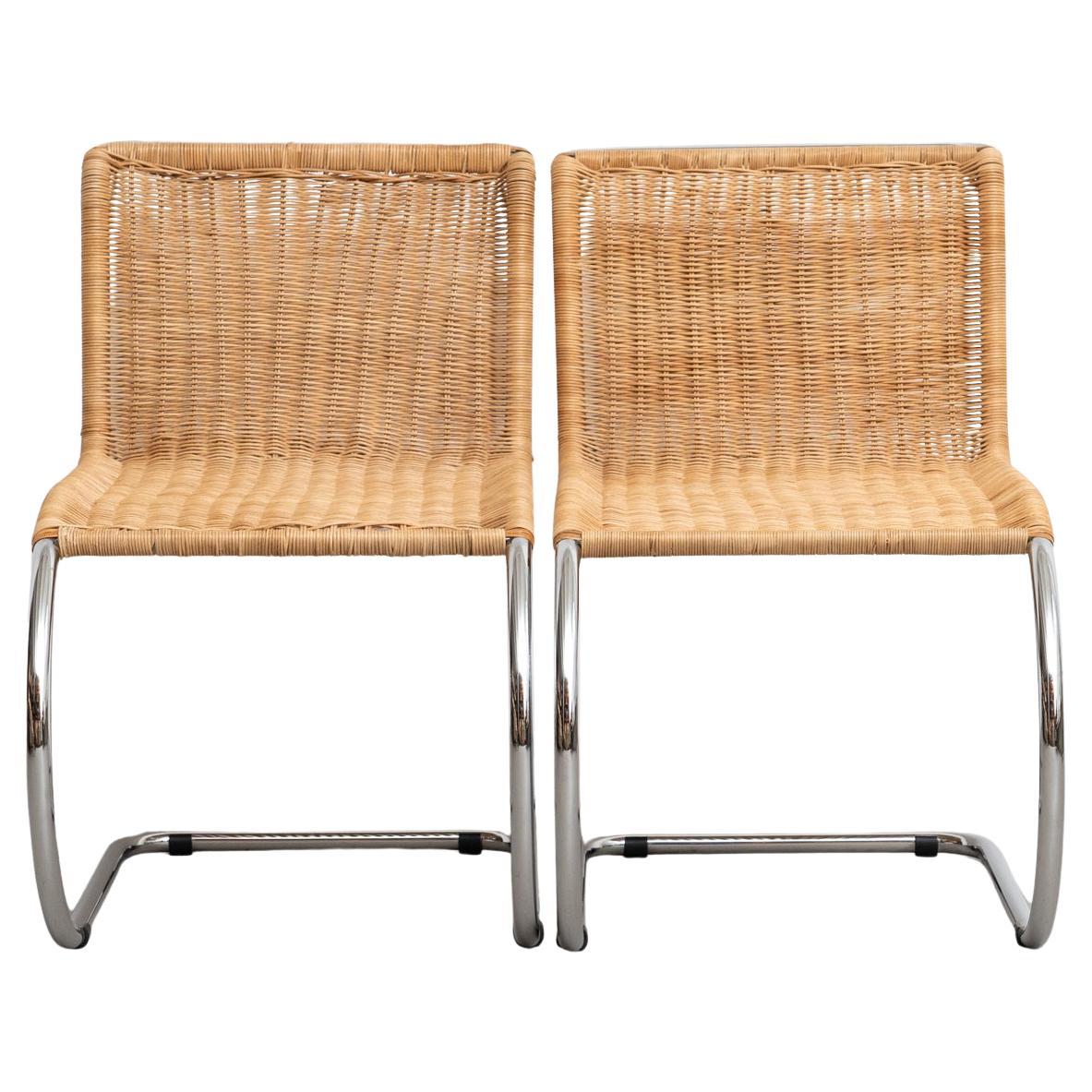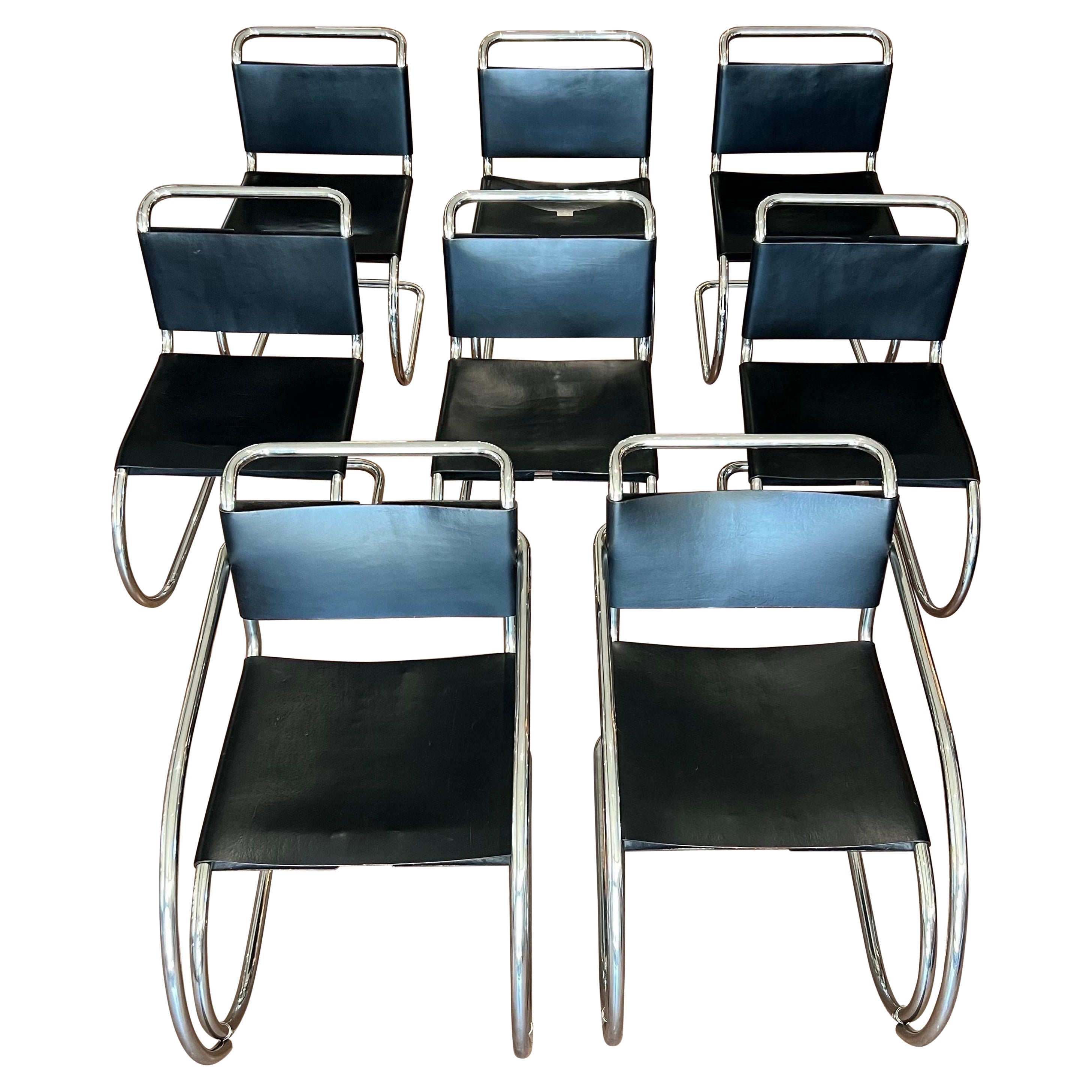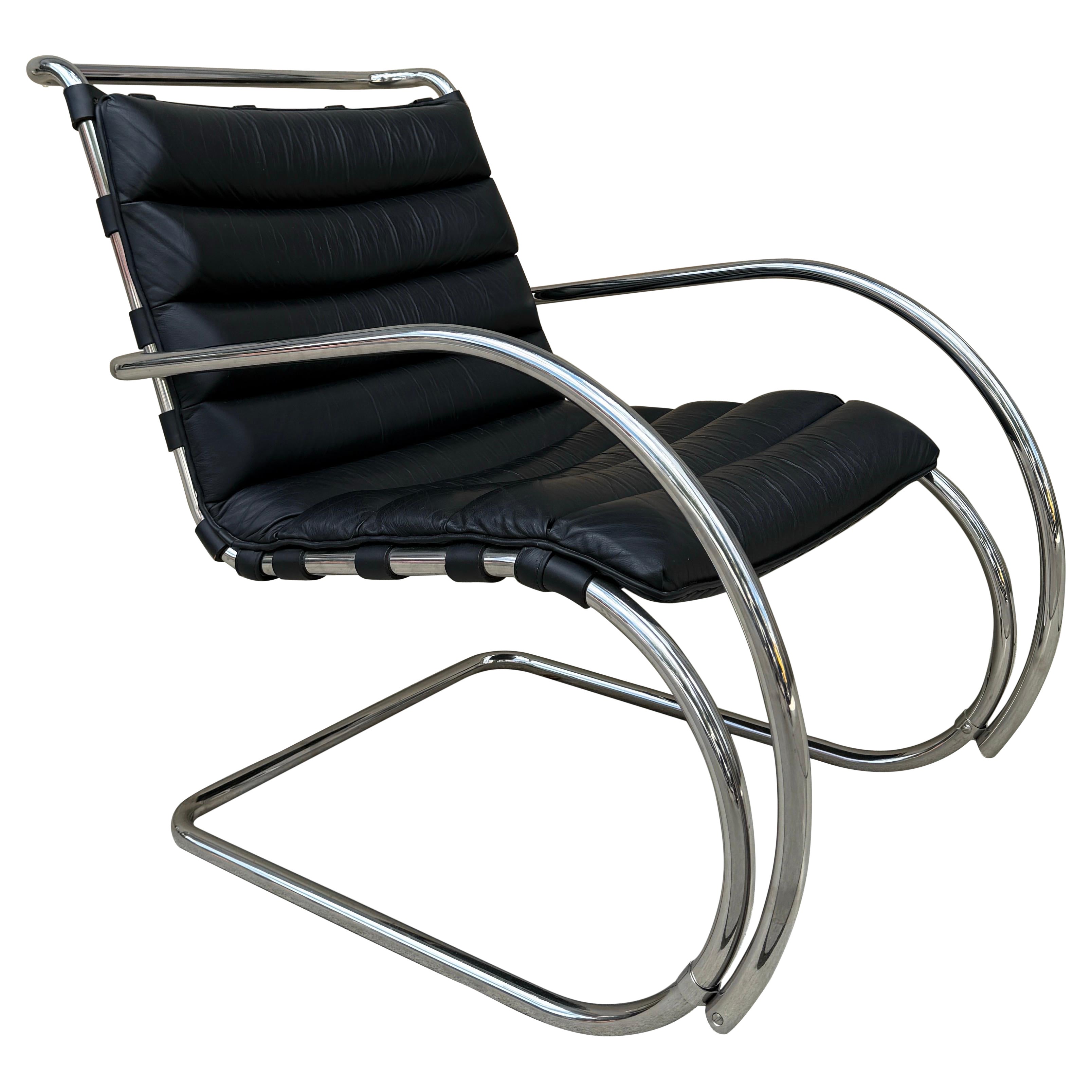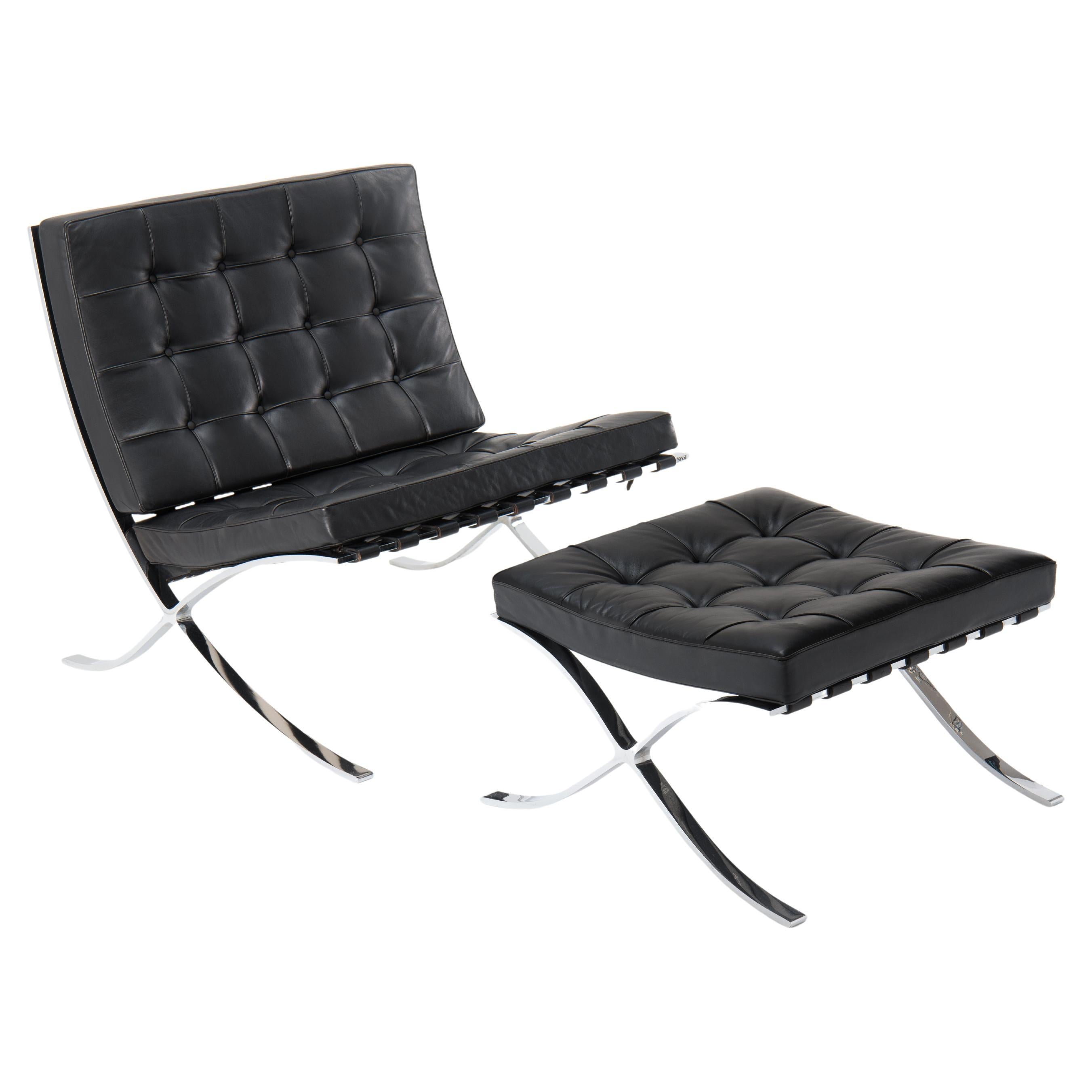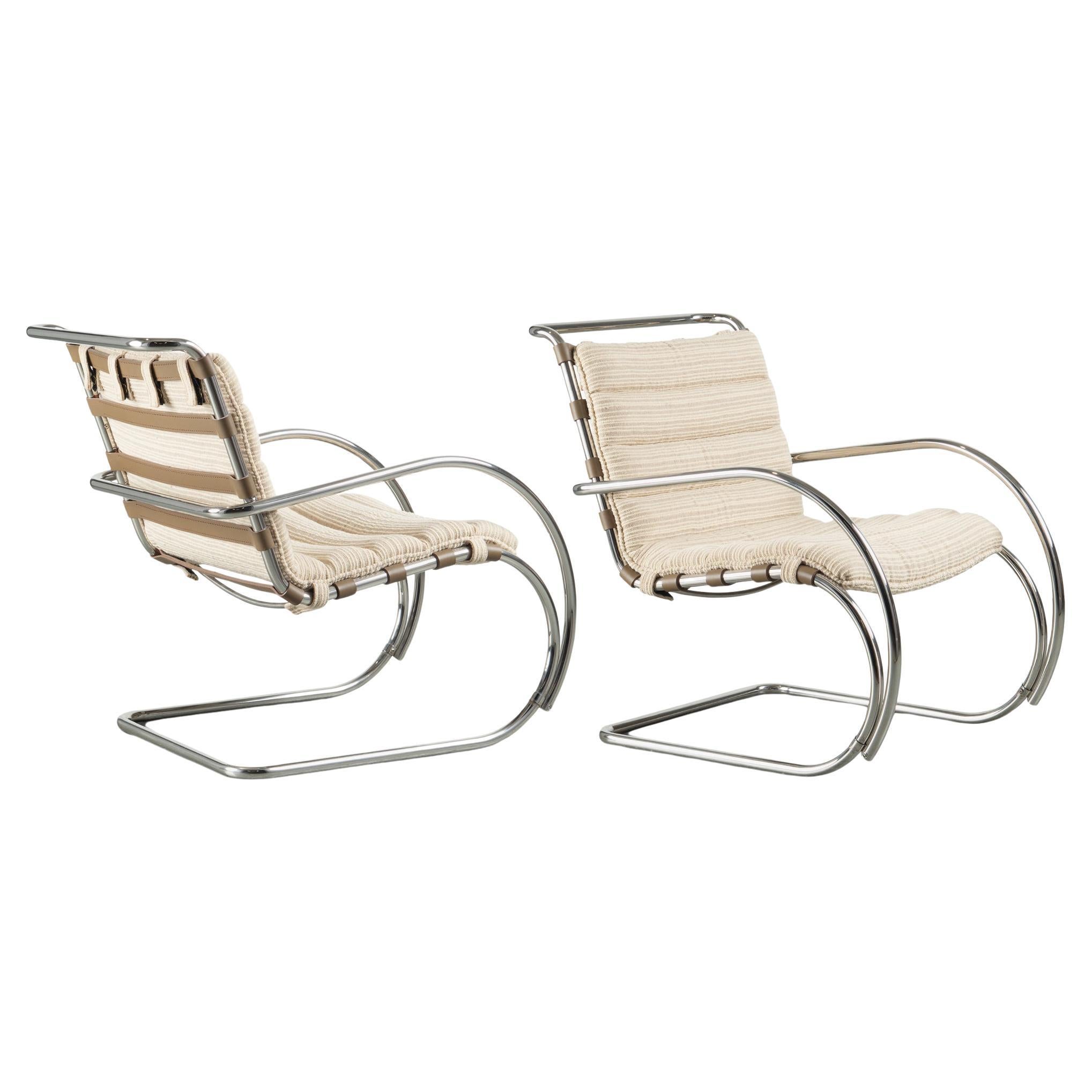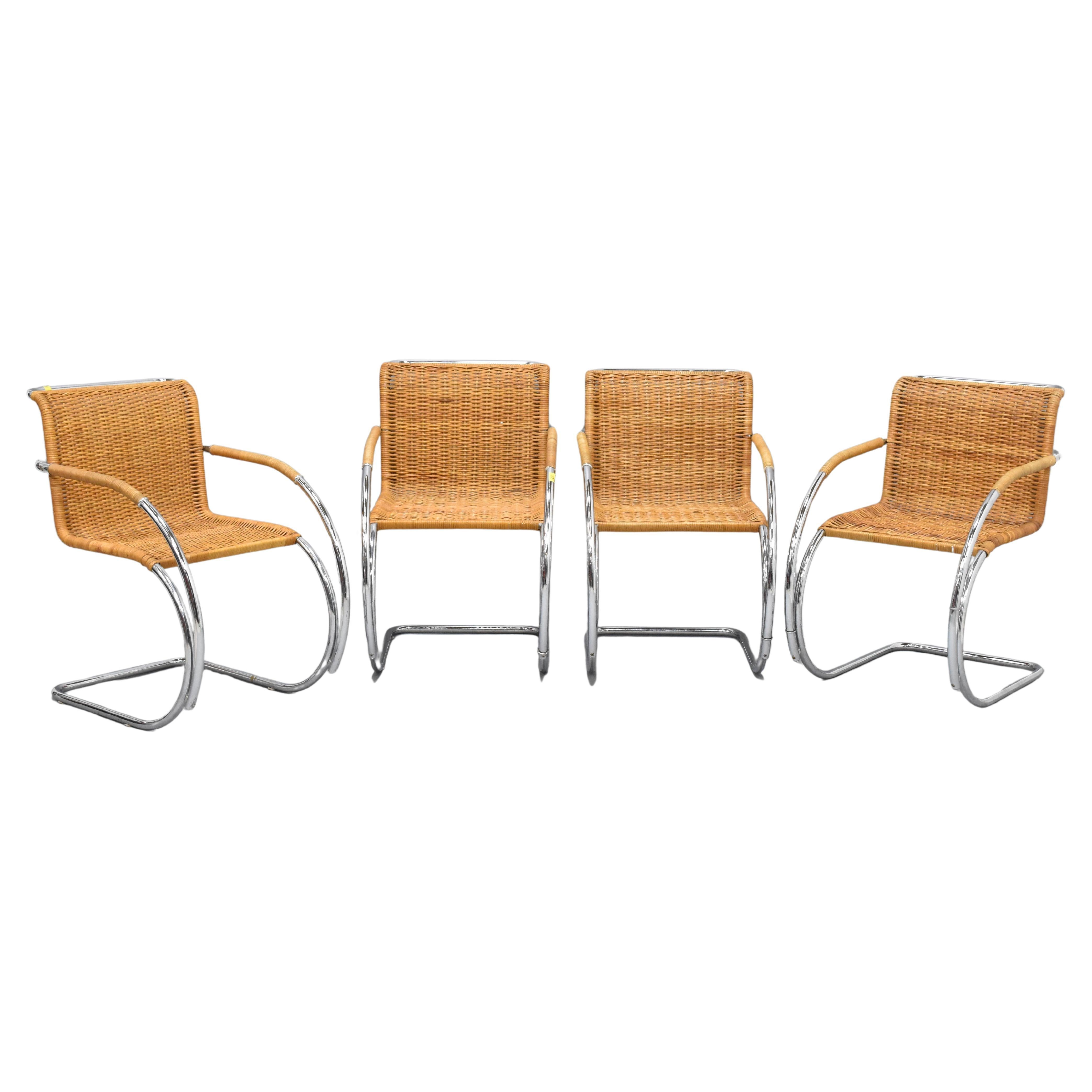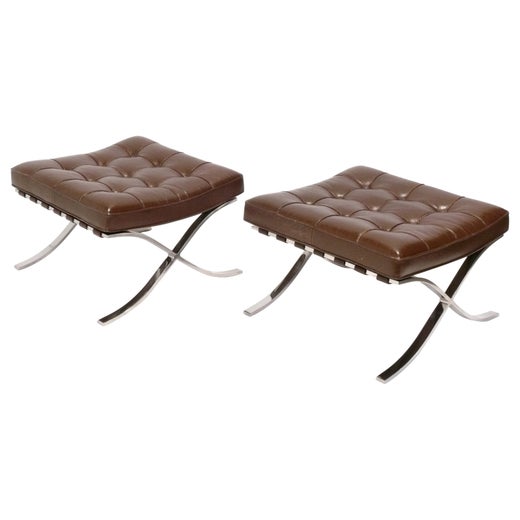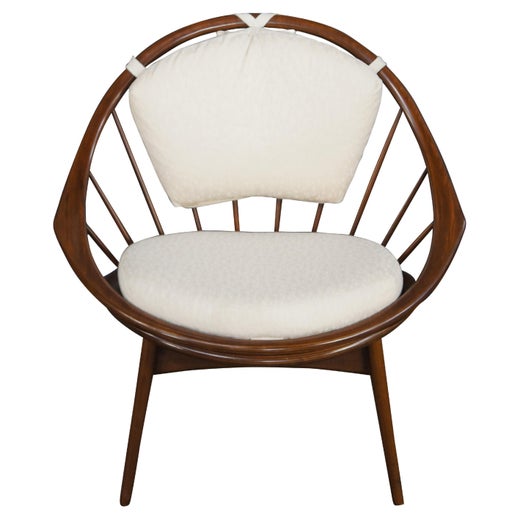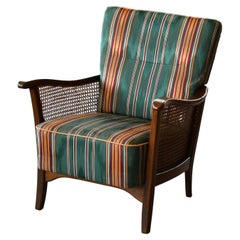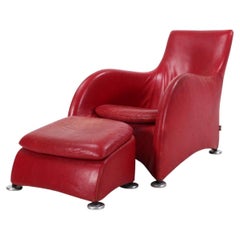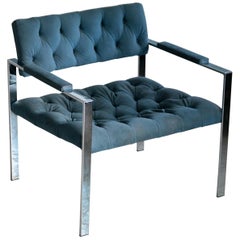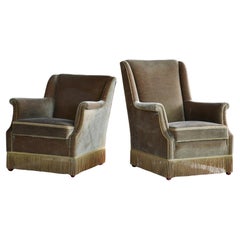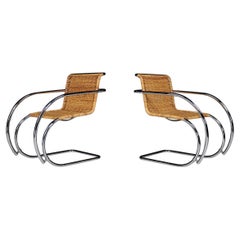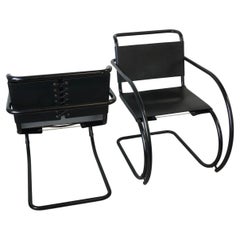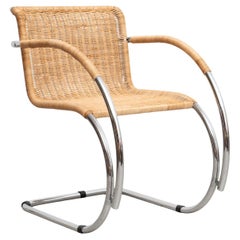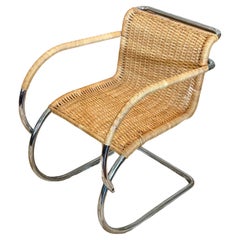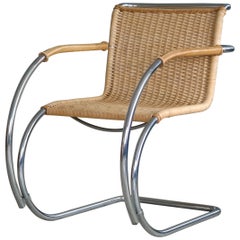
Mies van der Rohe MR20 Bauhaus Lounge Chair in Chromed Steel and Wicker
View Similar Items
Mies van der Rohe MR20 Bauhaus Lounge Chair in Chromed Steel and Wicker
About the Item
- Creator:Selig (Retailer),Ludwig Mies van der Rohe (Designer)
- Dimensions:Height: 32 in (81.28 cm)Width: 22 in (55.88 cm)Length: 32 in (81.28 cm)Seat Height: 17 in (43.18 cm)
- Style:Bauhaus (Of the Period)
- Materials and Techniques:
- Place of Origin:
- Period:
- Date of Manufacture:circa 1970
- Condition:
- Seller Location:Bridgeport, CT
- Reference Number:Seller: troy1stDibs: LU2373313358231
Ludwig Mies van der Rohe
Architect, furniture designer and educator, Ludwig Mies van der Rohe was a central figure in the advancement and promotion of modernist design and architectural theory and practice. Like Frank Lloyd Wright and Le Corbusier, he was a hugely influential presence in the field, who shaped the course of 20th-century architecture both through his buildings and his teaching of rationalist design principles.
Born in the medieval German city of Aachen, Mies found an interest in architecture as a boy while working for his father, a master stonemason. He had no formal education as an architect, but learned his skills as an apprentice to the designer Bruno Paul, and as a staffer in the office the proto-modernist architect and designer Peter Behrens. Following World War I, Mies rose to prominence in his field amid the liberal atmosphere of the Weimar Republic. His reputation was secured by his work on the German Pavilion at the 1929 International Exposition in Barcelona (commonly referred to as the Barcelona Pavilion) — which Mies codesigned with Lilly Reich, his creative and romantic partner — a radically simple, poetic, open-plan building pared down to its architectural essentials. Mies would go on to direct the Bauhaus from 1930 until 1933, when Nazi-government interference forced the closure of the progressive art and design school. Later that decade, he made his way to Chicago, where he remained for the rest of his career as a practicing architect and a dean of the Illinois Institute of Technology.
Mies’s famed dictum “less is more” grew from his belief that architecture both guides and expresses the spirit of the times, and he envisioned the 20th century as open-minded, logical, transparent and liberated by technology. His best-known buildings — residences such as the Villa Tugendhat in Czechoslovakia and the Farnsworth House in rural Illinois; skyscrapers like the 860–880 Lake Shore Drive apartment towers in Chicago and the Seagram Building in New York — reflect that philosophy. As do the most famous furniture designs authored by him or codesigned with Reich.
Pieces designed by Mies and Reich such as the Barcelona chair (the authorized version is produced by Knoll today), stools and daybed, or the cantilevered Brno chairs, deliver a maximum of comfort and support from a minimum of materials: their “lavishness” derives from the precision with which they are engineered and constructed. For the collector, the allure of Mies’s furniture is at once practical and idealistic. Useful and functional, his works embody the highest aspirations of modernism.
Find vintage Mies van der Rohe chairs, tables and other furniture on 1stDibs.
Selig
As an importer and producer, the Selig furniture company helped popularize timeless and elegant postwar designs in the United States.
Selig created Danish-inspired chairs, sofas and other furnishings for the home that were cutting-edge, contemporary and airy. The brand was also among the first to introduce Scandinavian and European modern styles to Americans in the 1950s and 60s. The company imported and manufactured furniture known for its extraordinary design and style using high-quality, enduring and seductive materials.
Selig was founded in 1931 by Mandell Selig and Samuel Wexler. The pair started the business during the challenging economic times of the Great Depression prior to World War II. By the 1960s, under the leadership of Wexler's son, Robert, Selig peaked with manufacturing factories in five American cities.
Selig’s importing business had a meaningful impact on Italian furniture manufacturers. Wexler, the junior, had a hand in advancing and growing the manufacturing sector of the country’s Udine region. Due to this contribution, the Italian government saw fit to knight Robert Wexler with the title of “Cavaliere.”
After nearly four decades of influencing seating and lounging preferences in the United States with sophisticated mid-century modern and Scandinavian modern furniture — including its own chrome rocking chairs and leather club chairs — Selig sold to Simmons, the mattress company, in 1970, thus dissolving. Much of what they produced and imported is still available despite no longer being manufactured, and many collectors seek original Selig furniture.
On 1stDibs, find an array of vintage Selig furniture that includes lounge chairs, armchairs, tables and more.
More From This Seller
View AllVintage 1960s Danish Mid-Century Modern Lounge Chairs
Cane, Beech
Vintage 1980s Danish Modern Lounge Chairs
Aluminum
Vintage 1970s American Mid-Century Modern Lounge Chairs
Steel, Chrome
Vintage 1950s Danish Scandinavian Modern Lounge Chairs
Beech, Mohair
Vintage 1960s Danish Scandinavian Modern Lounge Chairs
Naugahyde, Teak
Vintage 1970s American Mid-Century Modern Club Chairs
Chrome
You May Also Like
Vintage 1970s Italian Mid-Century Modern Lounge Chairs
Chrome
Vintage 1970s German Mid-Century Modern Lounge Chairs
Aluminum
Vintage 1970s Norwegian Mid-Century Modern Armchairs
Iron
Vintage 1960s North American Bauhaus Dining Room Chairs
Chrome
Vintage 1960s Italian Art Deco Chairs
Steel, Chrome
20th Century American Mid-Century Modern Armchairs
Steel, Chrome
